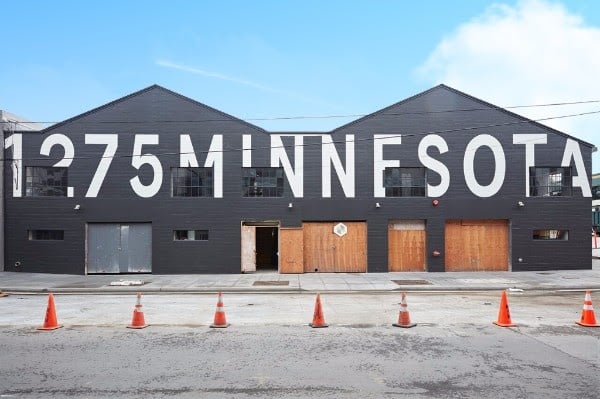Galleries
An Art Scene Evolves in San Francisco: Who’s Behind It?
There's been a generational shift, for starters.
There's been a generational shift, for starters.
Henri Neuendorf

Long before becoming the technology capital of the world, San Francisco and the surrounding Bay Area has been a community that has embraced different ways of thinking. Now the city’s art scene is catching up.
Local museums are refreshing their image to attract visitors, and international mega galleries are expanding to the city in the hope of capitalizing on the area’s tech wealth. Recently, art fairs are moving to the city in the hope of getting part of the pie, too.
A major factor is the total overhaul of the San Francisco Museum of Modern Art, which will become one of the biggest modern and contemporary museum in the United States when it reopens in June after undergoing a three-year, $610 million renovation led by famed architecture firm Snøhetta.
“The primary driver behind the Bay Area’s art boom is SFMOMA,” gallerist Jessica Silverman told artnet News in an email. “They set up the FOG Design + Art Fair and now they are re-opening the museum… Hundreds of Bay Area collectors have rallied around the museum and, in the process, they have given even greater meaning to collecting,” she explained. “I expect that many more collectors and curators will come to San Francisco on a regular basis.”

SFMoMA will reopen on May 14.
Photo: SFMoMA.
Furthermore, mega-galleries Pace will open a permanent space in Palo Alto at the end of April, and will soon by followed by Gagosian, which will open its 16th space on May 18th. And local dealer John Berggruen announced he’s moving to a bigger space close to SFMOMA as well.
On the surface, the buzz around San Francisco seems logical. Driven by the density of tech wealth, the Bay Area has the second highest concentration of billionaires in the world, and it’s not only the tech sector that’s buying art.
“There are more people buying art in the greater Bay Area than there were five years ago,” San Francisco dealer Tony Meier told artnet News over the phone. “Is it tech-related? Possibly.”
He added, “[Galleries are] selling to people who build buildings, they’re selling to people who have tech companies, they’re selling to people who are venture capitalists. It’s a whole wealth indicator that’s not strictly tech-centric… The wealth that exists in the greater Bay Area is of an enormous to epic proportion and it relates to all of these things, not one.”
The booming industry sector hasn’t just brought more money to the Bay Area, it’s also brought a different audience.

Claudia Altman Siegel opened her gallery in San Francisco 7 years ago.
Photo: Courtesy Altman Siegel Gallery.
Gallerist Claudia Altman Siegel told artnet News in a telephone interview, “Industry is thriving here and the city is becoming way more international, whereas I feel it used to be pretty provincial. Now people are flying in from Europe, Hong Kong, and all over the place all the time.”
She added that a recent generational shift in the city’s philanthropic community has also contributed to the buzz. “The new trustees of the museums now are more in their 40s…all of them [are] interested in the bigger picture, so its gotten a little younger here recently, and that’s exciting.”
On the other hand, San Francisco’s art scene is still small compared to New York or even the scene in Los Angeles, and questions remain over whether or not the city can sustain interest levels. Tellingly, only the mega-galleries have expanded to the Bay Area in recent years. Gagosian, for instance, can afford to operate the San Francisco gallery at a loss, compensated by profits made elsewhere. The same goes for Pace, which has eight other branches outside of the Bay Area.
In contrast, Zurich’s Karma International, Berlin’s Sprüth Magers, and New York’s Maccarone—who have all opened second spaces—chose Los Angeles instead of San Francisco. Cheaper rents, more space, and a deeper collector community still makes the city less of a gamble.

Andrew Kreps and Anton Kern are opening a pop-up in San Francisco in June.
Photo: Courtesy Anton Kern.
Meanwhile, New York gallerists Anton Kern and Andrew Kreps announced a joint pop-up in San Francisco in March, choosing to test interest levels before committing to a full-time gallery.
Altman Siegel admitted that it’s unlikely that San Francisco will ever dethrone New York or Los Angeles with respect to their collector bases and artists. “In terms of sustaining a really rich and vibrant, small scene it can be third [after New York and Los Angeles],” she said.
The gallerist explained that while the city has an great community of collectors, they are more discrete, thoughtful, and risk averse than their counterparts in other cities, making it difficult for outsiders to establish themselves in the city.
“I don’t want to be negative about people,” she added, “and I’m really appreciative and excited about the pop ups that are coming, but I just don’t think you’re going to get a lot out of a short-term stay here, it just doesn’t seem realistic to me.”
She added, “It’s one thing to be, ‘Oh there’s a lot of money there, we’re gonna go there and see what happens,’ but I just don’t think that things here happen quickly. Here, you have to be around for a long time and be established for a long time before people start to really be supportive.”